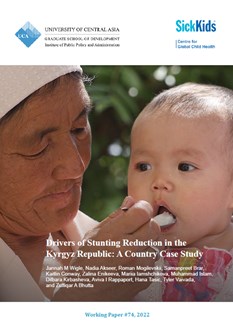Drivers of Stunting Reduction in the Kyrgyz Republic: A Country Case Study
Abstract
Background: Chronic malnutrition among infants and children continues to represent a global public health concern. The Kyrgyz Republic has achieved rapid declines in stunting over the last 20 years, despite modest increases in gross domestic product per capita.
Objective: This study aimed to conduct a systematic, in-depth assessment of national, community, household, and individual drivers of nutrition change and stunting reduction, as well as nutrition-specific and -sensitive policies and programs, in the Kyrgyz Republic.
Methods: This mixed methods study employed 4 inquiry methods, including:
- a systematic scoping literature review;
- retrospective quantitative data analyses, including linear regression multivariable hierarchical modeling, difference-in-difference analysis, and Oaxaca–Blinder decomposition;
- qualitative data collection and analysis; and
- analysis of key nutrition-specific and -sensitive policies and programs.
Results: Stunting prevalence has decreased in the Kyrgyz Republic, however, subnational variations and inequities persist. Child growth Victora curves show improvements in height-for-age z-scores (HAZ) for children in the Kyrgyz Republic between 1997 and 2014, indicating increased intrauterine growth and population health improvements. The decomposition analysis explained 88.9% (0.637 SD increase) of the predicted change in HAZ for children under 3 y (1997–2012).
Key factors included poverty (61%), maternal nutrition (14%), paternal education (6%), fertility (6%), maternal age (3%), and wealth accumulation (2%). Qualitative analysis revealed poverty reduction, increased migration and remittances, food security, and maternal nutrition as key drivers of stunting decline. Systematic scoping literature review findings supported quantitative and qualitative results, and indicated that land reforms and improved food security represented important factors. Key nutrition-specific and -sensitive policies and programs implemented involved breastfeeding promotion, social protection schemes, and land and health sector reforms.
Conclusions: Improvements in stunting were achieved amidst political and economic changes. Multilevel enablers, including poverty reduction, improved food security, and introduction of land and health reforms have contributed to improvements in health, nutrition, and stunting among children in the Kyrgyz Republic.
Am J Clin Nutr 2020;00:1–14.
Keywords: stunting, linear growth, children, nutrition, exemplar, Kyrgyz Republic, Central Asia, mixed methods
JEL classification: Q15, Q18, C01.
Supplementary Appendices 1–7 and Supplemental Systematic Scoping Literature Review Data are available from the “Supplementary data” link in the online posting of the article and from the same link in the online table of contents at https://academic.oup.com/ajcn/.









